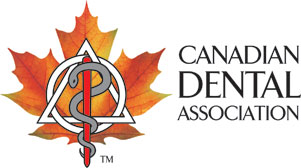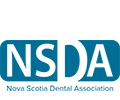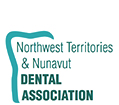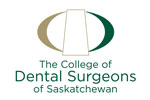Dentistry List of Tests and Treatments to Question
Choosing Wisely Canada
Choosing Wisely Canada (CWC) is the national voice for reducing unnecessary tests and treatments in the Canadian health care system. These unnecessary interventions can expose patients to potential harm, strain limited health care resources, and contribute to the climate crisis.
CWC identifies commonly overused tests and treatments that offer little or no value to patient care. They support health care providers and organizations in integrating these evidence-based recommendations into their routine practice.
In 2018, CWC partnered with the Canadian Association of Hospital Dentists (CAHD) to develop an evidence-based list of eight tests and treatments to question in dentistry. Effective 2025, the CDA officially assumed stewardship of this list and is equally available with sources on the Choosing Wisely Canada website.
Dentistry—Eight Tests and Treatments to Question
-
Don't use opioids for post-operative dental pain until non-opioid analgesics have been optimized.
For post-operative dental pain, the dose and frequency of a non-opioid (ibuprofen and/or acetaminophen) analgesic should be optimized. If this is not sufficient for managing pain, an opioid may be considered. If an opioid analgesic is appropriate, consider limiting the number of tablets dispensed and discuss the proper use and disposal of opioid drugs. Daily dispensing and/or delayed prescriptions may be useful strategies for appropriate use of opioids.
-
Don’t prescribe antibiotics for toothache or localized dental abscess.
Irreversible pulpitis or toothache occurs when the soft tissue and nerve inside the tooth (the dental pulp) becomes damaged because of decay, trauma, or large fillings. The intense pain is caused by inflammation of the dental pulp and the tissue surrounding the root—not by infection. Because this is not an infection, antibiotics do not relieve the pain and should not be used. Treatment for this condition is the removal of the damaged or diseased dental pulp, either through root canal therapy or extraction of the tooth. Inflammatory dental pain is best managed by NSAIDs.
An acute dental abscess is a localized infection that occurs due to an untreated infection of the dental pulp. Root canal therapy or extraction of the tooth, along with drainage of the abscess, is required to remove the infected tissue. Antibiotics are of no additional benefit. In the event of systemic complications (e.g., fever, lymph node involvement, or spreading infection), or for an immunocompromised patient, antibiotics may be prescribed in addition to drainage of the abscess. When antibiotics are used, consider strategies such as delayed prescriptions and/or shortened durations with reassessment for antibiotic resistance risk mitigation.
-
Don’t give prophylactic antibiotics prior to dental procedures to patients with total joint replacement or nonvalvular cardiac and other indwelling devices.
Infections of orthopedic implants are uncommon events and are rarely caused by bacteria found in the mouth. Although dental procedures such as extractions cause transient bacteremia, most bacteremia of oral origin occurs with activities of daily living, including brushing, flossing, and chewing. There is no reliable evidence that antibiotics before dental procedures prevent prosthetic joint infections. Patients should not be exposed to the adverse effects of antibiotics when there is no evidence of benefit.
There is no convincing evidence that oral bacteria from dental procedures cause infections of the following devices at any time after implantation: pacemakers; implantable defibrillators; ventriculoatrial/ventriculoperitoneal shunts; devices for patent ductus arteriosus, atrial septal defect, and ventricular septal defect occlusion; peripheral vascular stents; prosthetic vascular grafts; hemodialysis shunts; coronary artery stents; dacron parotid patches; and chronic indwelling central venous catheters.
-
Don't prescribe dental X-rays or other diagnostic imaging without indication.
Dental x-rays and other imaging modalities are important and necessary tools to diagnose and monitor oro-facial disorders and dental diseases. Determine the need for diagnostic imaging on an individual basis for each patient based on medical and dental history, clinical findings, and risk assessment, rather than on a routine basis.
-
Don’t replace fillings unless they have failed.
Dental restorations (fillings) fail due to excessive wear, fracture of material or tooth, loss of retention, or recurrent decay. Drilling to remove and replace fillings can weaken teeth and decrease their lifespan. Small defects should be repaired. Age of a filling should never be used as criteria for replacement.
Dental amalgam is a safe, affordable and effective dental material. Removal of amalgams, if the restoration is otherwise sound or can be repaired, is unnecessary, expensive, and may subject the individual to absorption of small doses of mercury. Furthermore, placement of composite resin restorations is known to cause a transient increase in urinary Bisphenol-A levels, for which there are unknown health effects. High-quality evidence suggests higher failure rates in composite resins versus amalgam restorations.
A preventive approach to the management of dental decay and a focus on long-lasting conservative restorations when they are truly indicated allows dental care to be delivered in a more environmentally sustainable way. Dental materials have an impact on the environment through all phases of manufacturing, procurement, clinical use and waste disposal. Use of rubber dam, high volume suction and mandated separation of amalgam waste contribute to both patient safety and planetary health.
-
Don’t delay or postpone urgent or essential dental care unless prohibited by public health directives.
Dentists are required to provide services within the context of provincial directives from the provincial health authority. When directives prohibit non-essential dental visits, urgent care must be provided to relieve pain and treat infections. Critical dental services should be prioritized to minimize harm to patients from delaying care and be provided in a way that protects patients and dental personnel. The latter includes interim stabilization of the dental problem; minimization of aerosol-generating procedures; and use of appropriate PPE and other IPAC measures as advised by provincial health authorities/regulators. Strategies should be developed to monitor patients whose care has been cancelled or delayed.
-
Don’t provide in-person care when a virtual care visit can address the patient’s problem effectively and is acceptable to the patient, for example, to relay negative oral biopsy results or when frailty or distance prevents travel to a dental assessment.
Virtual care minimizes exposure of vulnerable patients to incidental infections and allows patients to avoid unnecessary travel. It provides more timely and accessible care, especially when challenges such as distance, disability, or frailty exist. A co-benefit of virtual care is planetary health. Patient, provider, and staff travel to and from dental appointments accounts for the largest percentage of total carbon emissions in the dental clinic setting. Travel for dental appointments can be reduced by combining visits for family members, combining operative procedures, reducing appointment frequency based on patient risk and the use of virtual care when appropriate.
-
Don't prescribe antibiotics or opioid analgesics without an examination.
Antibiotic resistance has increased because of the widespread use of antibiotics over many years. It is a significant global threat to health. Opioid misuse has also become a serious problem in recent years. During a pandemic phase where only “essential” dental care is permitted or advised, it may be necessary to prescribe antibiotics or analgesics without examining the patient in person. When managing new dental infections and/or dental pain on an emergency basis, if the concern has not resolved after the preliminary course of therapy, the patient should be re-examined to determine the next steps.











